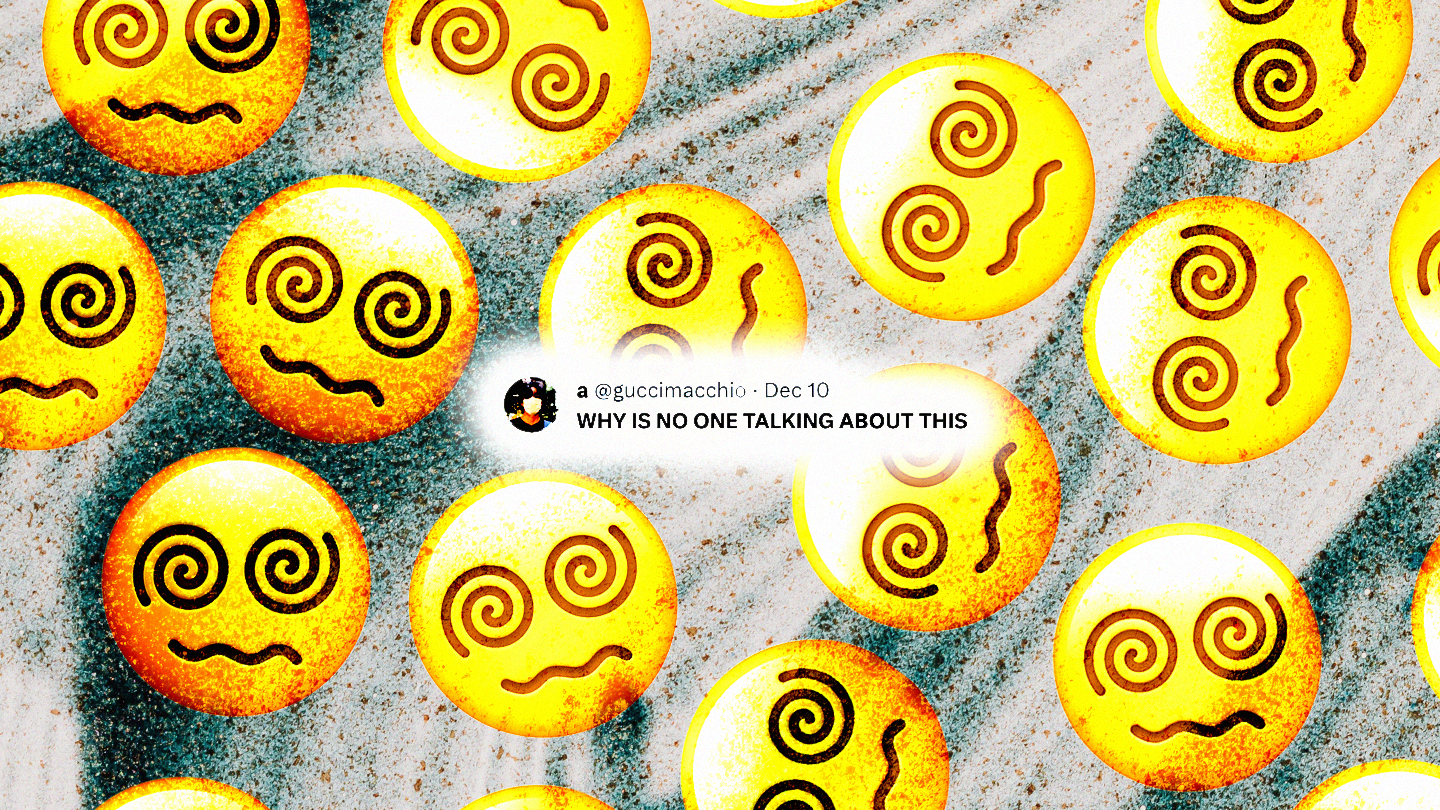Nope, it’s not just you: 2023 has been a weird year. The coronation of King Charles, millionaires imploding in submarines, Twitter rebranding as X, even the weather has been off.
But aside from this bizarre timeline of events, there’s something else we haven’t quite been able to put our finger on. Something’s in the air… Call it a general sense of boredom, a loss of vigour, an inability to feel excited about the future. There is a tangible sense, felt both IRL and online, that most of us are unable to do anything more at this point than simply muster up enough energy to power through the day. As humans, we have a tendency to rely on naming things as a way to understand and feel better about what’s happening in the world. And so, enter: the permaweird.
The permaweird, coined by Venkatesh Rao in his essay of the same name, is “a perennial state of frustrated urgency; a cortisol-saturated state of being with nothing to do and nowhere to go.” It is Venkatesh’s “modest entry in the ongoing contest to name the present.”
The term emerges from the idea of ‘permacrisis’, which was Collins Dictionary’s word of the year in 2022 and means “an extended period of instability and insecurity, especially caused by a series of catastrophic events”. Where ‘permacrisis’ embodies the bewildering sense of reeling from one unprecedented event to another, ‘permaweird’ delves deeper into our emotional response to this new normal. It captures the feeling of being stuck in an unpredictable reality, unable to foresee what comes next.
In his essay, Venkatesh criticises the crisis framing which has catalogued events for the past few years. He explains, “the longer [the permaweird] persists, the more we begin to harbour the growing suspicion that perhaps there is no crisis as such. That for the most part, despite the snowballing weirdness, there is nothing in the circumstances for which a literal crisis response, in a biochemical fight-or-flight sense, is appropriate, either at an individual or collective level.” At this point, many of us are no longer showing up day-to-day in crisis mode despite the never-ending crisis surrounding us. Is this the new normal? Or is it something inbetween?
If you want to put a date on it, let’s say it starts in 2016, the year of Brexit and Donald Trump (what a time to be alive!). Since then, the theory goes, every year has been weirder than the last. Naturally, the pandemic takes the cake, a time of stockpiling toilet rolls and clapping outside our front doors every night at 8pm while NHS workers were left lethally exposed by the appalling lack of PPE. And then, just as we thought we were out of the woods and things began to resume a sense of normalcy, Russia’s invasion of Ukraine swiftly followed with dystopian TikTok’s emerging from young Ukranians to show the reality of war. This year, perhaps we can say, is characterised by the infiltration of AI into our everyday lives, leaving the future of humanity entirely at the mercy of Silicon Valley boys and their toys. There is a general sense that things are weird, but this simply is how it is now. We are in the permaweird, we have adapted to the general condition of weirdness.
In a world saturated with information, Venkatesh explains, our adaptive responses to an ever-evolving crisis seem to offer little solace or restore any semblance of normalcy, whether it be the “new” or the familiar. Instead, we are stuck with an unshakeable feeling and a longing for an imagined present that remains elusive.
While history has witnessed its share of peculiar times, the advent of the internet, for better or worse, is to thank for keeping us more informed than ever. Each day online brings forth a new headline, a fresh cause to champion, and quote-tweet captioned “why is no one talking about this????”. However, this abundance of information doesn’t necessarily translate into increased agency. Despite our awareness, we grapple with an asymmetric condition, communicating urgency without often actually doing anything concrete about it.
As we plunge headfirst into the technological AI metaverse, confronted by the grim toll of global conflicts, the tightening grip of inflation, and the ominous rise of carbon emissions and temperatures, the weight of perpetual crises makes it hard to sustain a collective sense of urgency needed for meaningful action. Instead, we find ourselves navigating our daily lives with a persistent sense of unease.
However, this isn’t a call to disengage or abandon efforts to effect change. But amidst this turmoil, there’s solace in understanding why we feel the way we do. It prompts reflection, perhaps making us a touch more gentle with ourselves as we anticipate what the new year will bring. In the midst of the permaweird, we’re all trying to move with it, navigating this condition and occasionally pushing against it when the time feels right.



